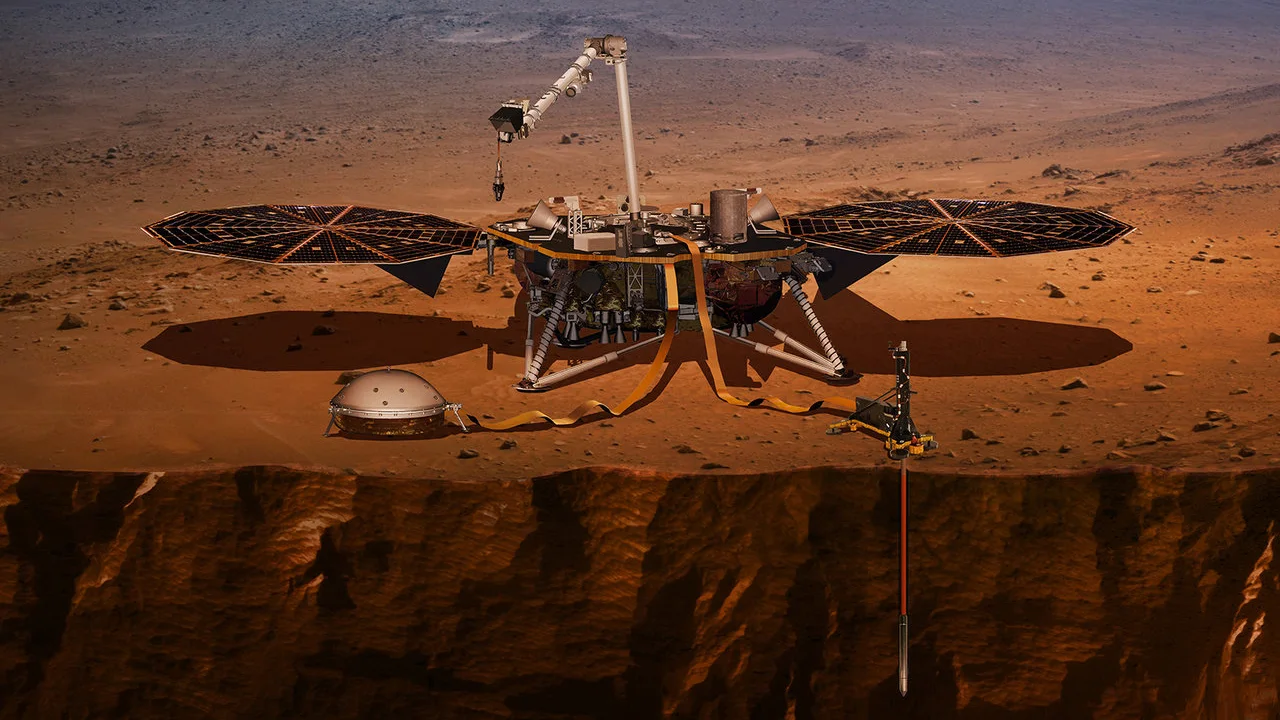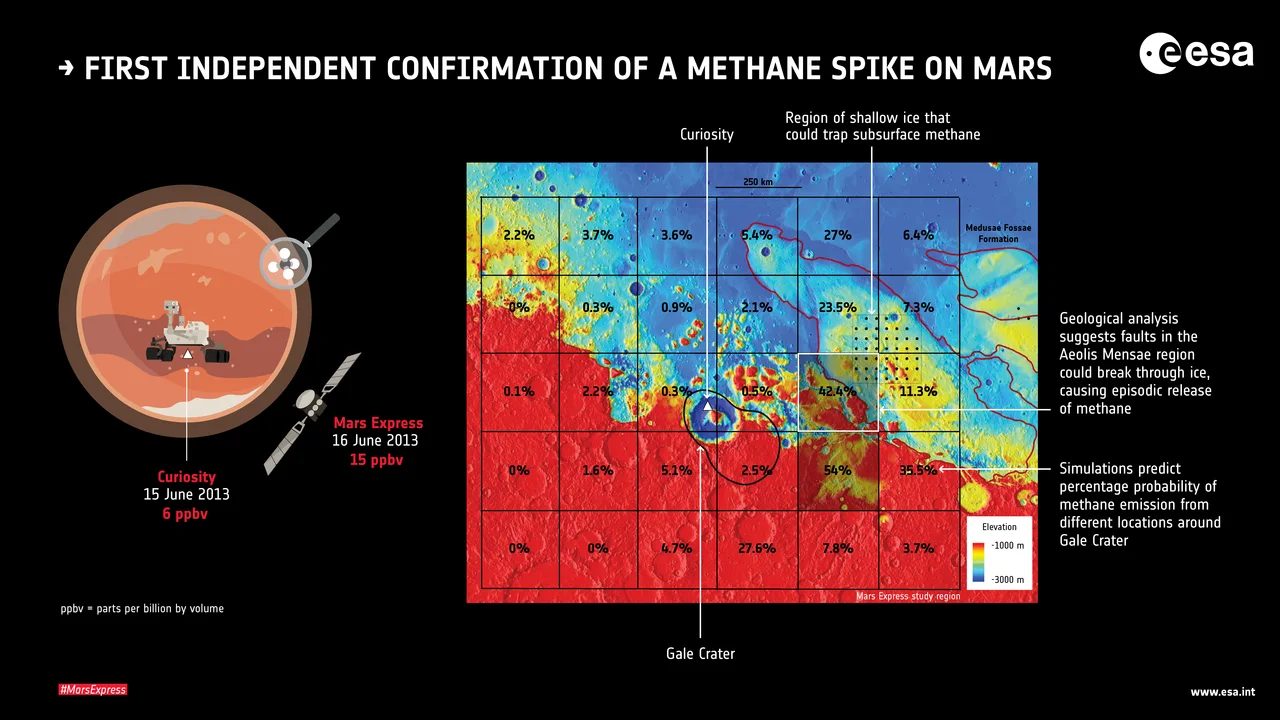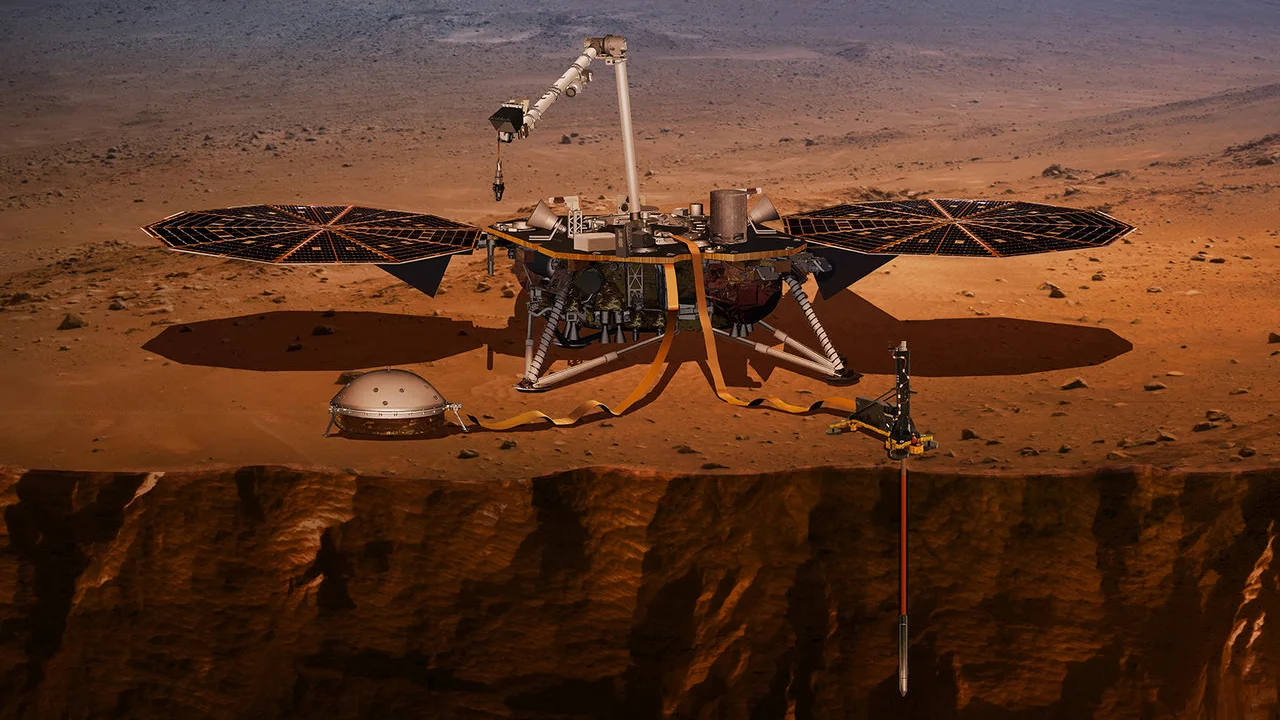
Life on Mars? NASA InSight may help solve this mystery
Is there life on Mars? NASA's InSight lander may provide us with a key clue that could solve this mystery.
For decades, scientists have been trying to answer an important question: Is there life on Mars?
This is not about life on Mars in the planet's distant past, though. This is about whether there is life on the Red Planet right now.
NASA's Viking landers made the first attempts at an answer, back in 1976. Their results can only be described as 'inconclusive'. While there was some excitement at the first results sent back, it turned out that they couldn't definitively point to the presence of life. Some scientists still swear by the initial conclusion, though.
In the 40+ years since, a collection of orbiters, landers, and rovers have gathered more data. They have revealed that Mars - now a cold, arid planet - most certainly had a warmer, wetter environment, long ago, which was capable of supporting primitive life. They also showed that there are places where life could exist now - vast deposits of pure ice beneath the planet's surface, and even a lake of liquid water under at least one of those ice deposits.
In one of the most recent discoveries, a team of researchers found evidence for an ancient, planet-wide groundwater system on Mars. Using cameras on board the Mars Express orbiter, they spotted features at the bottoms of deep craters, all around the northern hemisphere of the planet, that could only have formed due to water, as the planet's oceans gradually retreated underground.

Distribution of once-watery basins on Mars. Credit: NASA/MGS/MOLA, F. Salese et al (2019)
These robots have even spotted methane - a gas that is closely linked to life here on Earth - seeping out from Mars' surface.
WHAT'S UP WITH MARS METHANE?
Mars has a complicated history with methane. Sometimes it's there, and sometimes it isn't. It has even been seen to have a seasonal variation.
Hints of it have been seen using Earth telescopes. Orbiters have spotted it from space. NASA's Curiosity rover has detected methane, from the ground, as well.
Just within the last two weeks, we also received exciting news from the European Space Agency's Mars Express spacecraft. Scientists examining data from its instruments were able to confirm the same detection of methane made by the Curiosity rover, back in July of 2013.

Mars Express matches methane spike measured by Curiosity. Credit: Giuranna et al. (2019)
This confirmation is extremely important because it tells scientists that Curiosity's methane detection wasn't a fluke or an error. With two independent detections, the methane spike really did happen!
The complicated part comes from the fact that, for every detection we have of methane on Mars, there seems to be a contradictory measurement that says that the methane is gone.
Just this week, it was revealed that data from the ESA's ExoMars Trace Gas Orbiter, which began scanning Mars' atmosphere in April of 2018, found no signs of methane in the air.

Key methane measurements on Mars. Credit: ESA
From practical experiments, it has been found that methane breaks down in Mars' atmosphere in a little less than a decade. This is why it can be such a good sign to look for, when searching for life. Since it doesn't stick around for hundreds of years, let alone millions or billions of years, if you detect it, the methane must have been produced or at least released into the atmosphere, fairly recently.
The latest data seems to imply that Mars' methane is disappearing on a much quicker time-scale, perhaps on the order of five years. So, this raises the question of what keeps removing the methane that quickly.
On the other hand, though, if the methane is quickly removed from Mars' atmosphere, what keeps producing the methane we're detecting?
BIOLOGY OR GEOLOGY?
Biological life produces methane. We find that here on Earth. For this reason, methane is one of the atmospheric gases that exoplanet scientists have on their list of potential signs of life on alien worlds.
Mars' surface conditions are lethal to most forms of life we know, with frigid temperatures, low atmospheric pressure, toxic soil chemicals, and intense radiation from space. There may be some Earth microbes surviving on the insides or undersides of the rovers and landers there, where they are protected from the radiation.
If there is life on Mars - life that actually developed there, rather than hitching a ride from Earth - it will likely be found some distance underground. There, microbes would produce methane as part of their metabolism.
Biology isn't the only way to get methane, though.
In the investigation of methane on Mars, scientists have pointed out that there is a geological way of producing it, as well. It requires the mineral olivine to be exposed to extreme heat (such as from contact with magma), while in the presence of water.
So, the big question is, which of these is the more likely source of Mars' methane?
A seasonal variation of methane could point more to biology, if it was a planet like Earth. Seasonal temperature swings would make life on the surface more active during warm periods and less active during cold periods. Martian microbes, if they exist, would live underground, though, where there is less impact from seasonal temperature changes. They would likely be active year-round.
What the seasonal changes would do, however, is to produce cracks and fissures in subsurface ice, which would allow trapped methane to seep up to the surface - regardless of whether the methane was from biology or geology.
THIS IS WHERE INSIGHT COMES IN
Why is NASA InSight important for this search?
InSight wasn't sent to Mars to search for life. It doesn't have an instrument that can detect methane. It has a seismometer to detect marsquakes. It has a weather station. It has a special radio experiment to look at the "wobble" of the planet. Finally, it has a heat probe instrument, nicknamed "The Mole".

In this graphic, NASA's InSight lander is shown with its instruments deployed, including the HP3 "Heat Probe", at the lower right, having tapped down into the surface to take the planet's temperature. Credit: NASA/JPL-Caltech
This last instrument, the Heat Flow and Physical Properties Probe, or HP^3, is the one that could - possibly - provide us with the next big breakthrough in the search for life on Mars.
According to Jim Green, NASA's Chief Scientist, when The Mole is fully deployed, it will allow planetary scientists to develop the first temperature profile of the inside of Mars. That profile will tell us how much the planet has cooled down, whether Mars' core is still hot enough to be liquid, and how close to the surface magma could be.

What is the interior of Mars like today? NASA InSight should be able to tell us. Credit: NASA/JPL-Caltech
One possible result is that InSight finds the interior of Mars is still extremely hot. If this is the case, magma could be close enough to the surface to produce methane from water and olivine. In that case, the answer might still be up in the air, or we may have to concede that Mars' methane is probably all from geological sources.
This result would raise other questions, though. For one, why would Mars still be that warm inside, when such a small planet should have cooled off much quicker than Earth. Secondly, why wouldn't Mars be as tectonically-active as Earth? These would be brand new mysteries to explore!
If InSight finds that the interior of Mars has cooled considerably, this could point away from geology for Mars' methane. Any magma hot enough to drive the water-olivine reaction would likely be too deep under the surface for the methane to be geological. From there, it would just come down to exactly how warm the interior is. If it's warm enough for there to be pockets of liquid water fairly close to the surface, biology becomes a more likely source of the methane we're detecting.
WHAT'S NEXT?
There is no getting around the fact that to definitively answer the question "Is there life on Mars" we will have to actually dig up a Martian microbe and examine it under a microscope. Even then, we'll have to ensure that it wasn't just a microbe that hitched a ride on board one of our robots from Earth.
In the meantime, though, until we can build a robot that can do just that, or until we can just go do it, ourselves, all of the missions we have on and above Mars are going to keep adding to the case - even the ones that weren't even sent there with that question in mind.
For InSight, as of April 11, the scientists in charge of the HP^3 instrument are still working on getting the heat probe deployed. Back in February, when NASA ordered the lander to begin the sequence of The Mole hammering down under the surface, it suddenly became hung up, about 30 centimetres down.

This animation, made with images from InSight's Instrument Deployment Camera (IDC), show one of NASA's hammering tests. The attempt causes the HP^3 casing to rise up slightly, and then settle back down. Credit: NASA/JPL
At the moment, according to Tilman Spohn, who is the HP^3 instrument lead, they are working on three different possibilities:
The cable trailing behind the probe is hung up on something inside its protective casing, although they have determined that could only happen under very specific circumstances,
There is a large rock in the way that it cannot currently work around or push out of the way, but the rocks seen on the surface indicate that there shouldn't be any particularly large ones under the ground, and
The soil the probe is trying to hammer down into doesn't stick together very well, so on each tap downward, the probe ends up rebounding slightly, and the material fills in below it, so it simply can't make any progress.
The InSight team is still trying to determine exactly which one is the correct problem, although the third option could be the one (and possibly the easiest to fix).
Once they figure all of this out, they can then continue with this part of the mission. Then, we can finally get an idea of what the interior of Mars looks like, and what the implications of that are for other things, such as the search for life.










